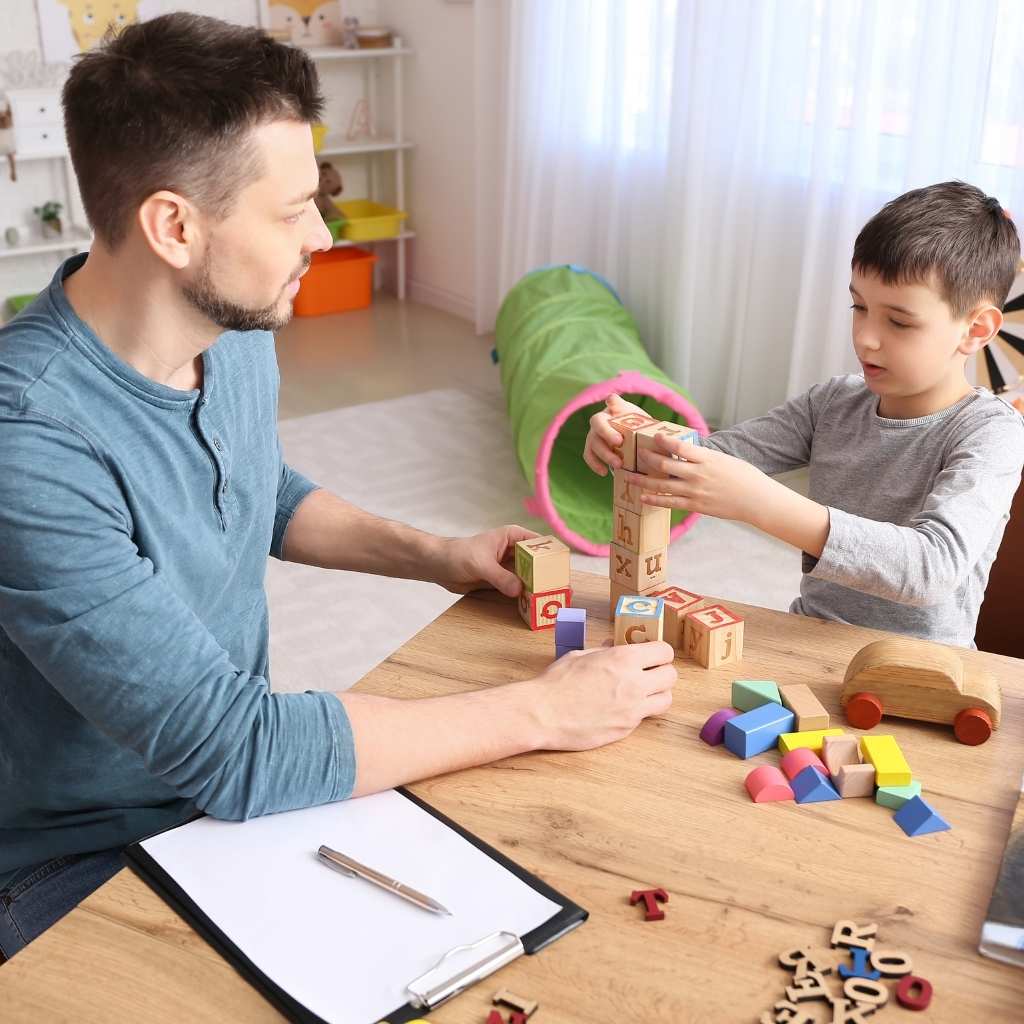Table of Contents
How Long Should ABA Therapy Last?
Every parent who receives an autism diagnosis for their child faces countless questions. Among the most pressing is: “How long should ABA therapy last?”. Well, the answer isn’t simple, and that’s completely understandable. Each child with autism has unique needs, with their own strengths, challenges, and pace of development.
ABA therapy duration varies significantly from child to child, typically ranging from several months to multiple years. While some children may show remarkable progress within 6-12 months, others benefit from longer-term support spanning 2-4 years or more. The key lies in understanding that this journey is deeply personal and should be tailored to your child’s specific needs.
In this blog by ABA Centers of Virginia, we’ll explore what determines ABA therapy duration and how you can work with professionals to find the right approach for your family.
Factors That Influence ABA Therapy Duration
Several interconnected factors determine how long a child might benefit from ABA therapy. If we comprehend this, we can also set realistic expectations and guide treatment decisions:
Your Child’s Developmental Level and Skills
Children entering ABA therapy at different developmental stages will naturally require varying durations of support. Those with stronger foundational skills in communication and social interaction may progress more quickly through treatment goals.
Recent research from the National Center for Biotechnology Information shows that experts can adjust the treatment intensity based on particular needs and responses to therapy. This flexibility ensures that each child receives the appropriate level of support for their current abilities.
Age at Treatment Start
The timing of early intervention plays a crucial role in determining ABA therapy duration. The U.S. Department of Health and Human Services recommends starting therapy as early as two to three years old, when the brain is most adaptable to learning new skills. Children who begin ABA therapy at a younger age typically require fewer years of treatment compared to those who start later.
This situation doesn’t mean older children can’t benefit significantly from ABA therapy. However, younger children often show more rapid skill acquisition, which can lead to shorter overall treatment durations.
Behavioral Challenges and Learning Objectives
The specific behaviors your child needs to work on directly impact therapy duration. Some learning objectives may be mastered relatively quickly, while others require consistent practice over extended periods. Recent research indicates that treatment intensity shows a strong relationship with mastery of learning objectives, where higher treatment intensity predicted greater progress.
Family Involvement and Home Environment
Parental involvement and home reinforcement significantly influence both the effectiveness and duration of ABA therapy. Families who actively participate in implementing strategies at home often see faster progress, potentially reducing overall treatment duration. The consistency between therapy sessions and daily life creates more opportunities for skill generalization.
The Role of Individualized Treatment Plans
One size never fits all when it comes to ABA therapy duration. Board-Certified Behavioral Analysts (BCBAs) craft personalized treatment plans for each participant, considering the individual’s unique needs and objectives. This individualized approach recognizes that treatment plans must be tailored rather than following a standardized timeline.

Research reveals significant variability in clinicians’ approaches to individualizing treatment intensity recommendations. This variation highlights the importance of working with experienced professionals who can assess your child’s specific needs and adjust the program accordingly.
Setting Realistic Goals and Timelines
Your child’s initial assessment will help establish specific, measurable goals that guide the therapy process. These objectives serve as benchmarks for progress and help determine when certain aspects of treatment may be reduced or concluded.
The goals set at the start of ABA therapy will largely determine how long treatment is necessary.
Some goals may be achieved within months, while others might require ongoing support. Regular reassessment ensures that therapy remains relevant and practical as your child grows and develops new skills.
Short-Term vs. Long-Term ABA Programs
ABA therapy programs can be structured as short-term intensive interventions or long-term comprehensive support systems. Understanding the differences helps families make wise decisions about their approach:
- Short-Term Intensive Programs: These might last 6-18 months and typically involve higher weekly hour commitments. This approach works well for children who need concentrated support in particular areas or those who show rapid skill acquisition.
- Long-Term Comprehensive Support: These programs might span 2-4 years or more, with intensity levels adjusted over time. This approach benefits children who need consistent support across multiple skill areas or those who require more time to generalize learned skills.
The beauty of individualized treatment planning is that programs can evolve. A child might start with intensive short-term goals and transition to longer-term maintenance support as they progress.
How ABA Therapy Duration Impacts Progress
- The Intensity-Progress Connection
Experts typically recommend between 20 and 40 hours per week of ABA therapy, particularly for early intervention programs. However, this intensity should be balanced with your child’s individual needs and family circumstances.
- Quality Over Quantity
While research supports intensive programming, quality matters as much as quantity. Effective ABA therapy focuses on meaningful skill development that translates to real-world success. A systematic review of 29 studies found ABA programs to be mild to highly effective, offering significant benefits to children with autism.
- Tracking Progress and Adjusting Duration
Regular progress monitoring allows teams to adjust ABA therapy duration based on your child’s response to treatment. Some children may reach their goals faster than expected, while others might benefit from extended support in certain areas. This flexibility ensures that therapy remains beneficial and cost-effective.
Understanding ABA Therapy and Early Intervention
ABA therapy is a structured, evidence-based approach that helps children, teens, and adults on the spectrum improve their capacity to communicate, interact with others, and overcome everyday challenges. It focuses on increasing helpful behaviors while reducing those that may interfere with learning and social interaction.
Early intervention in autism refers to a group of services and support provided to small children with developmental issues or disabilities and their families. When combined with ABA therapy, early intervention can impact a child’s developmental trajectory.
Comprehensive ABA therapy programs typically address:
- Communication and language development
- Social skills and peer interaction
- Daily living skills and Independence
- Academic and pre-academic skills
- Behavioral challenges that interfere with learning
- Family training and support
Finding the Right Balance for Your Child at ABA Centers of Virginia

Determining the appropriate ABA therapy duration requires ongoing collaboration between families and qualified professionals. At ABA Centers of Virginia, we understand that each family’s journey is unique, and we’re committed to providing individualized support that evolves with your child’s needs.
Our process begins with thorough diagnostic evaluations that identify your child’s strengths, challenges, and learning style. This information forms the foundation for individualized treatment plans that include realistic timelines and measurable objectives.
Ongoing Support and Adjustment
Keep in mind that ABA therapy takes continuous assessment and adjustment. Regular team meetings ensure that your child’s program remains relevant and practical as they grow and develop new skills. We’re committed to transparent communication about progress and any recommended changes to treatment duration or intensity.
Moving Forward with Confidence and Support
Sometimes, wondering about ABA therapy duration and making decisions about it can feel overwhelming, but you don’t have to face these choices alone.
If you’re thinking about ABA therapy for your child or have questions about early intervention services, ABA Centers of Virginia is here to help. Our team provides comprehensive diagnostic evaluations made by experts, individualized treatment planning, and ongoing support for families in Virginia.
Contact ABA Centers of Virginia today by clicking here or calling us at (855) 957-1892 to learn more about our services and how we can support your child’s unique journey.







